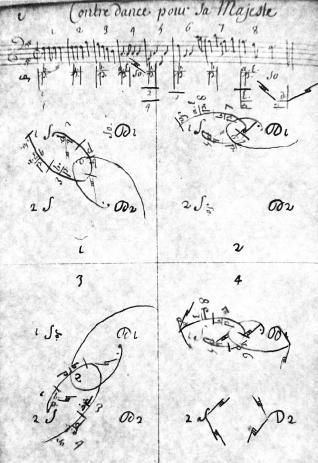|
Strip The Willow
Strip the willow is a country or barn dance. It has variations depending upon whether it is being performed as a movement in a larger dance or a complete dance in itself. The form described here is that commonly used as part of a Scottish country dance. The dancers form a ''longways set'' (a row of gentlemen facing their partners, a row of ladies) of four couples. The 'objective' is to move the top couple to the bottom of the set, and the other couples move up one position. A brief description of the dance would be: The top couple link arms and spin each other for a count of 16, at which point the lady 'strips' down the line of men alternating left-handed anti-clockwise swings with someone else's partner right-handed clockwise half-turn swings with their partner working steadily down the set, the gentleman at this point swinging only with his partner. At the bottom, the couple join again and spin for a count of 8, then the gentleman 'strips' up the line of ladies the same as his ... [...More Info...] [...Related Items...] OR: [Wikipedia] [Google] [Baidu] |
Country Dance
A country dance is any of a very large number of social dances of a type that originated in the British Isles; it is the repeated execution of a predefined sequence of figures, carefully designed to fit a fixed length of music, performed by a group of people, usually in couples, in one or more sets. The figures involve interaction with your partner and/or with other dancers, usually with a progression so that you dance with everyone in your set. It is common in modern times to have a "caller" who teaches the dance and then calls the figures as you dance. Country dances are done in many different styles. As a musical form written in or time, the contredanse was used by Beethoven and Mozart. Introduced to South America by French immigrants, Country Dance had great influence upon Latin American music as contradanza. The ''Anglais'' (from the French word meaning "English") or ''Angloise'' is another term for the English country dance. A Scottish country dance may be termed an . ... [...More Info...] [...Related Items...] OR: [Wikipedia] [Google] [Baidu] |
Barn Dance
A barn dance is any kind of dance involving traditional or folk music with traditional dancing, occasionally held in a barn, but, these days, much more likely to be in any suitable building. The term “barn dance” is usually associated with family-oriented or community-oriented events, usually for people who do not normally dance. The caller will, therefore, generally use easy dances so that everyone can join in. A barn dance can be a ceilidh, with traditional Irish or Scottish dancing, and people unfamiliar with either format often confuse the two terms. However, a barn dance can also feature square dancing, contra dancing, English country dance, dancing to country and western music, or any other kind of dancing, often with a live band and a caller. Modern western square dance is often confused with barn dancing in Britain. Barn dances, as social dances, were popular in Ireland until the 1950s, and were typically danced to tunes with rhythms.Vallely, F. (1999). Th ... [...More Info...] [...Related Items...] OR: [Wikipedia] [Google] [Baidu] |
List Of Scottish Country Dances
There are more than 15,000 documented Scottish country dances; only the most frequently danced or otherwise notable ones are listed here. Dances are marked with the music and dance styles used: R8×32 3C/4 means a Reel of 32 bars repeated 8 times for 3 couples in a set of 4 couples in a longwise set. The letters for the music styles are: R reel; J jig; P polka; S strathspey; W waltz. * Anniversary Reel – R4×32 4C set – Sheila Muir 1987 * Awa', Whigs, Awa' (R8x32) 3C (4C set) Hugh Foss Dances to Song Tunes * The Bees of Maggieknockater – J4×32 4C set – John Drewry 1975 * The Belle of Bon Accord – S4×32 4C set – John Drewry 1981 * Blooms of Bon Accord – R4×32 4C set – John Drewry 1971 * Bratach Bana – J8x32 3C/4 – John Drewry 1964 * Clutha – R4×48 Square set – unknown 1890 *Canadian Barn Dance - *Dashing White Sergeant – 32 bar reel 3 facing 3 round the room – unknown * The De'il Amang the Tailors – R8×32 3C/4 – unknown * The Dream C ... [...More Info...] [...Related Items...] OR: [Wikipedia] [Google] [Baidu] |
English Folk Dance
English folklore consists of the myths and legends of England, including the English region's mythical creatures, traditional recipes, urban legends, proverbs, superstitions, and folktales. Its cultural history is rooted in Celtic, Christian, and Germanic folklore. During the Renaissance in the 16th century, England looked to more European texts to develop a national identity. English folklore has continued to differ according to region, although there are shared elements across the country. Its folktales include the traditional Robin Hood tales and the Brythonic-inspired Arthurian legend, and their stories often contained a moral imperative stemming from Christian values. The folktales, characters and creatures are often derived from aspects of English experience, such as topography, architecture, real people, or real events. History Before England was founded in the year 927, Wessex and its surrounding areas' cultures were transformed by the invasion of the Danish Kin ... [...More Info...] [...Related Items...] OR: [Wikipedia] [Google] [Baidu] |

